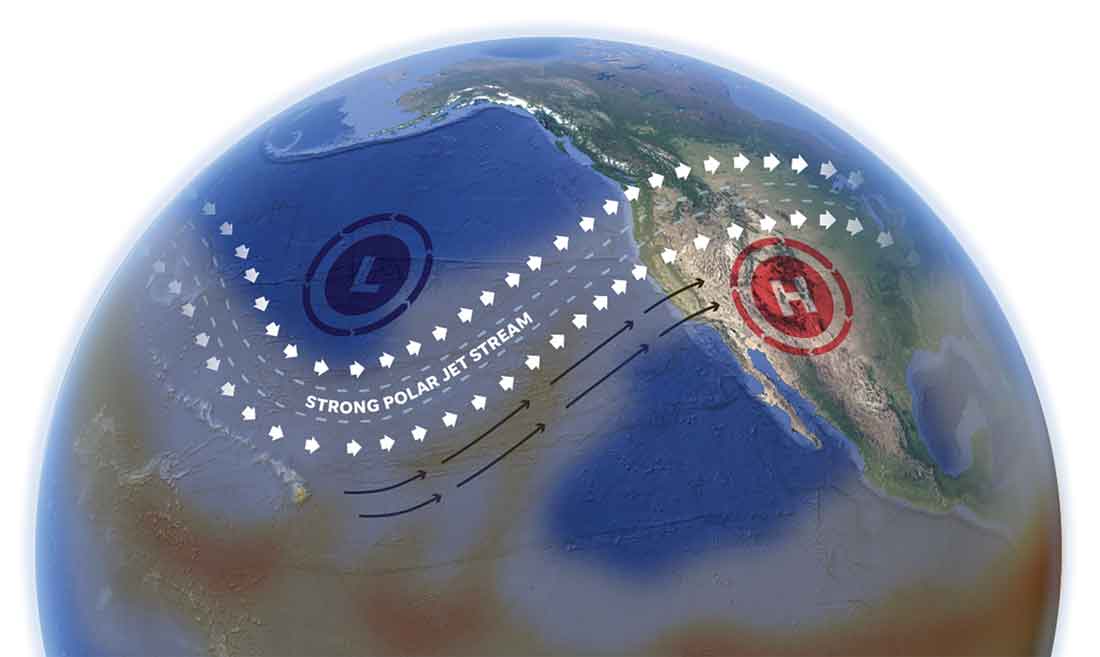Atmospheric Rivers and Other Meterological Misconceptions
It should come as no surprise to anyone that the popular media often sacrifices scientific accuracy on the altar of enticing clickbait entertainment.
Perhaps one of the best examples of this expediency can be found in the notion of your TV’s “weatherperson.” The main qualification for this position seems to be a youthful attractiveness and an engaging personality. How the weather is presented on our screens is the result of a motive to promote an audience and this motive is often in conflict with the accurate portrayal of the science.
People tune in because they want to know if it is going to rain on tomorrow’s picnic, for example. I often hear people say things like: “The weatherman said it was going to rain today and he was wrong.” This is correct as far as it goes. The weatherman may have said it was absolutely going to rain, but a true meteorologist would never present the information that way.
A meteorologist would forecast a probability of rain. Many people have trouble with the concept of probability which explains Powerball and a certain city in southern Nevada. If a true meteorologist forecasts a 60% chance of rain and it doesn’t rain, it bears noting that this isn’t enough information to determine if the meteorologist was right or wrong. If, after say 100 forecasts of a 60% chance of rain, it rains 60 times, then we know the forecast was correct. A 60% forecast of rain obviously means a 40% chance that it won’t rain. Not, as I’ve heard some people say, that 60% of the area will get the wet stuff.
So, this now brings us to the current buzz-phrase Atmospheric River. Popular media presents this as if it is a newly discovered idea or inherently the result of climate change. However, this is just the current phrase for a longstanding meteorological concept.
People think of rain as a cloud that blows in from various places on the surface of the Earth to other places bringing rain. However, precipitation is really the confluence of three basic elements. These three essential elements form and dissipate as they coincide and cease to coincide.
Like the fire triangle of fuel, heat and air, rain requires all three of these elements to occur. First, there needs to be a relatively warmer, moister, usually lower layer of air. Second, there needs to be a colder, generally higher layer of air and lastly, there needs to be enough dynamics or turbulence to cause these two layers to interact. Remove any one of these three basic elements and no rain.
The newly-minted buzz phrase, “Atmospheric River,” refers to the first element—the warmer, moister layer. The long-standing concept of a “fetch” are at the heart of this idea. In oceanic terms, a fetch refers to the distance a wave travels unhindered across open water. In hydrological terms a fetch is the distance that relatively warmer, moister air travels over water. Usually, the longer a warm air current of air moves over water, the longer the fetch and the more moisture it will entrain.
Meteorologists talk about storm systems that have no meaningful fetch because the would-be moist layer is traveling mostly over land and is therefore “moisture starved.” Such a system is unlikely to produce anything more than sprinkles. In general, our winter storms are produced by a warm fetch up from the southwest in the direction of the Hawaiian Islands and a cold layer roughly out of the Gulf of Alaska. Add in some turbulence and, voila, rain!
Back in the 1980’s the buzz phrase was “The Pineapple Express” for this moist fetch up from the southwest. Now the imagination-capturing “Atmospheric River” seems to be all the rage. Same phenomena, new century.
A great place to get good online information from real meteorologists doing the real science of weather forecasting is at the National Oceanic and Atmospheric Administration’s (NOAA) discussion page in our regional National Weather Service office located in Oxnard.
The page is intended to be a discussion between meteorologists in the adjacent offices and is a good look at the real science of weather forecasting. Despite popular opinion, modern weather forecasting is remarkably good once understood. The latest computer models are truly what’s new and amazing in the science of weather. Find this page at: weather.gov/wrh/TextProduct?product=afdlox.
Eric Fitzgerald is a graphic artist and designer working in the motion picture industry. Born in Santa Monia and raised in the Santa Monica mountains, Fitzgerald has had a life-long curiosity about the world around us all. Fitzgerald has been keeping meteorological records with a Davis Instruments weather station since 1996 from Ferwood.








